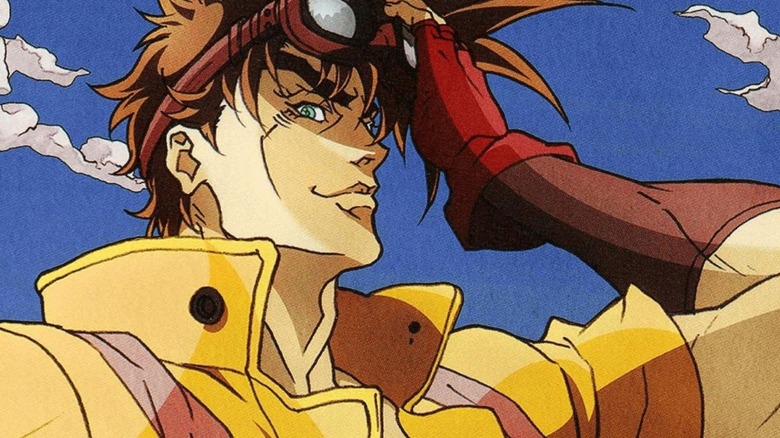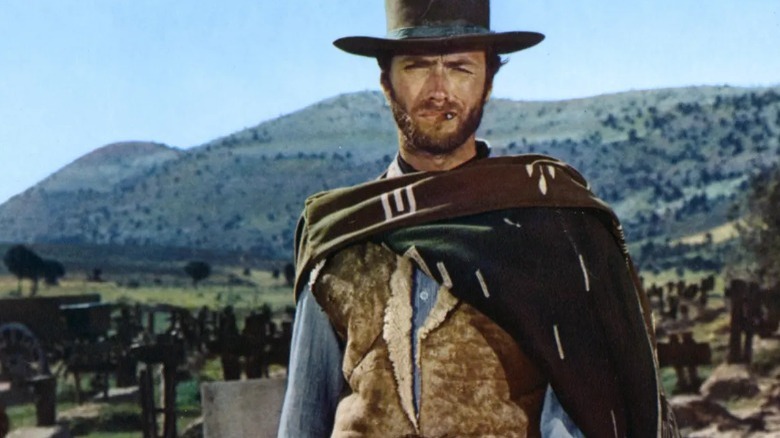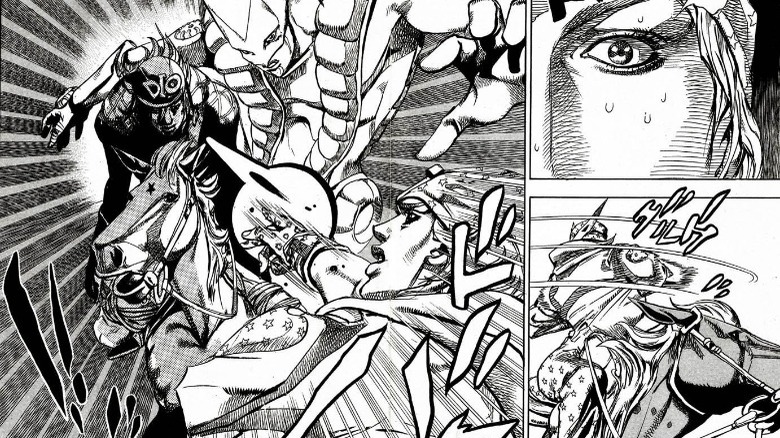Without This Legendary Western Director, We Wouldn't Have JoJo's Bizarre Adventure
In 1987, when manga-ka Hirohiko Araki penned the first chapters of "JoJo's Bizarre Adventure," he was still exploring what would later be known as his signature artistic style. Soon, "JoJo's Bizarre Adventure" became Araki's magnum opus, and the long-running series is widely celebrated for its unique use of standard shonen tropes. The influence of Araki's manga series is so great that it inspired a string of manga, anime, and video games, including the "Persona" franchise, which owes a lot to the concept of "Stands" in Araki's series.
Araki sets the events of "JoJo's Bizarre Adventure" in 1800s England, wherein Jonathan Joestar, aka JoJo, and his brother Dio Brando are engaged in a feud over the inheritance of familial property. Things take a supernatural turn after Dio becomes a vampire, and JoJo is forced to learn magical techniques to combat his brother. Part three of the manga, which is the most popular in the series, does away with the vampire aspect and introduces Stands, which is a visual manifestation of a lifeforce. These concepts, combined with unique fighting styles, launched "JoJo's Bizarre Adventure" as a landmark manga, which led to it being adapted into a massively popular anime series.
But what were the inspirations behind Araki's masterpiece? In a 1996 interview with Kappa Magazine, Araki talked about the many inspirations behind his work, attributing a lot of credit to the master of the Spaghetti Western, filmmaker Sergio Leone.
How Westerns inspired Araki's style of drawing
In the Kappa interview, Araki explained that he grew up imitating the works of Tetsuya Chiba and Sanpei Shirato, who penned sports manga and adult-oriented manga respectively. As he approached adulthood, Araki became "a huge 'Godzilla' fan" and was obsessed with Ronald Neame's 1972 disaster film, "The Poseidon Adventure." However, it was Sergio Leone's filmmaking that had a huge impact on Araki's "JoJo." The manga-ka said:
"To be honest, I owe everything to the great Italian director Sergio Leone and his 'spaghetti westerns' with Clint Eastwood. My father had an inordinate passion for those films and characters, and I watched them with him."
Leone's impact on Araki's work was paramount to the point that he named a "JoJo" character after the director, namely Leone Abbacchio, a Stand User in the fifth part of the series. Apart from this, Jotaro Kujo, the protagonist of part three, was inspired by the "The Man with No Name" in Leone's "Dollars" trilogy, played by Clint Eastwood. In keeping with the "Man with No Name" trope, Kujo is quiet and aloof, portrayed as a delinquent with a gentle heart. The similarities between Kujo and Eastwood's Western characters do not end there, as the character's signature "Yare Yare Daze" catchphrase was inspired by Eastwood's performance in Leone's "The Good, The Bad, and The Ugly."
These connections between Araki's worldbuilding and the Western genre are prominent in the manga, as the Joestars act like cooly confident cowboys when they interact with other characters. However, there is one particular manga run in the "JoJo's Bizarre Adventure" series that owes a massive debt to the Spaghetti Western genre: "Steel Ball Run," which follows JoJo and Gyro Zeppeli in a race across America for a grand prize of $50 million.
Steel Ball Run's Western themes are spectacular
Araki's art for "Steel Ball Run" is a Leone Western brought to life. The landscape is mostly barren, except for glimpses of little towns, with two gunmen often dueling to death in front of dusty inns. Character close-ups during intense fight scenes are also employed by Araki here, which helps capture the excitement and anxiety in the character's features against the backdrop of the adventures they embark upon.
Although Araki plays homage to Leone's Western gunfights, he introduces his creative flair by upping the tension in the fights. Every "JoJo" confrontation is stylishly violent, and "Steel Ball Run" uses two-page panels to highlight this aspect, while also relaying the atmosphere of fights that take place in open spaces. In contrast, fights taking place in alleyways and constricted spaces are displayed in narrow, tall panels for maximum visual impact.
Perhaps the great twist Araki introduces to his Western-inspired manga run is the way he treats the themes of the American Dream, specifically in which the protagonist attains a romanticized idea of justice. By situating the President of the United States as an antagonist, Araki challenges these notions while penning a wild, riveting story about corruption and magical powers. Authority figures are questioned, the protagonist's intentions are not completely noble, and the ending is extremely nihilistic, which is in keeping with the tone of "JoJo's Bizarre Adventure." In essence, "Steel Ball Run" bases its world on the tropes of Leone's Westerns, but adds layers that are true to the spirit of the franchise — the results are great.
Meanwhile, please enjoy this Spaghetti Western version of "Sono Chi No Sadame," as it truly is glorious and fits Araki's worldbuilding extremely well.


